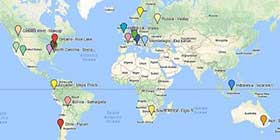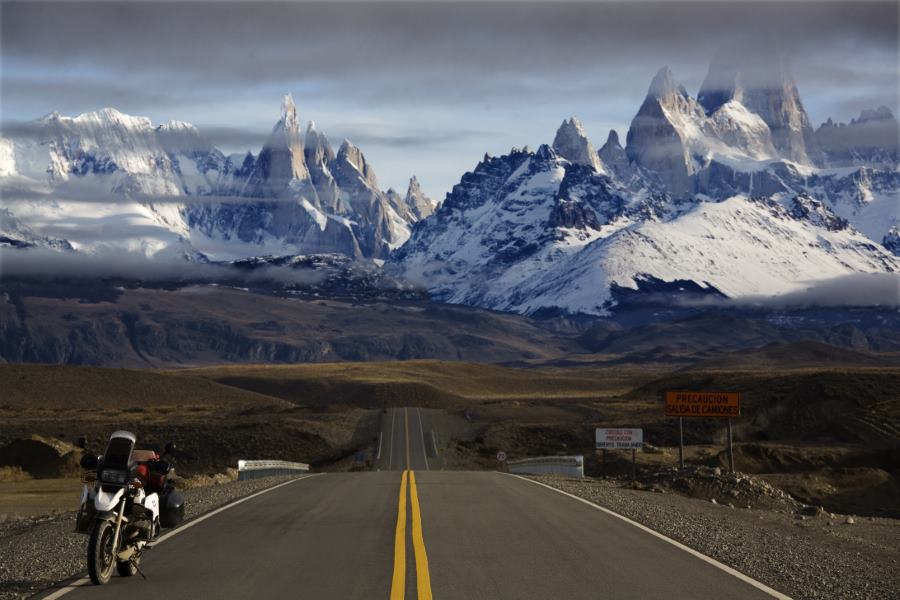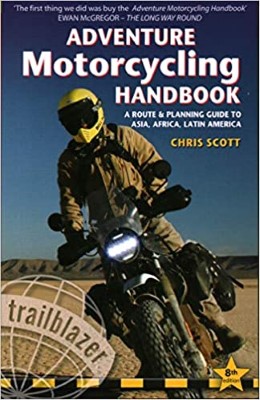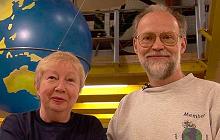It felt a little like Christmas when we got up this morning because we were both excited and ready to go. Last night, Re put together most of the stuff that was on our list to take to the airport. We weren't scheduled to meet Jeewan until 10:30, so we had some breakfast and waited for the morning to pass. Around 10:15 we fired up the bikes and rode to Eagle Eyes Export. When we arrived, Jeewan introduced us to his brother, who was to lead us to the airport on his motorbike and handle the paperwork there, as well. Jeewan said we needed to hurry, as today, the students were striking, and traffic would be shut down after 11:00 am. We followed the brother through the heavy traffic for the five or so miles to the airport. At just about every intersection there were truckloads of police in riot gear who looked ready for anything. Once at the airport, the brother simply waved at all the officials, and we were allowed to pass all the security checkpoints. After he parked his bike, he waved us into the warehouse, where the craters were already nearly finished with our crate. We also spied four other crate bases that appeared to be sized for single motorbikes. Suraj's crew of four bikes was supposed to ship yesterday, but maybe they didn't due to the general strike.
Re and I got to work on the now familiar task of disassembling the bikes for shipping. A couple of minutes later, the brother came over and asked how much petrol we had in the bikes. We replied that it was less than a liter, but that we would drain it. He smiled and said we didn't need to, but if anybody asked, we should say we did. All of a sudden, we heard four big bikes in the parking lot, and into the warehouse pulled Brian and Tanja on their DRZ400s, and Stefano and Annamarie, an Italian couple who are also traveling the world. We said our hellos and got back to work. While I started removing the front wheels and fenders, Re disconnected the batteries and got to work on the handlebars.

Forty-five minutes later or so, we were lifting the bikes onto the crate base. The craters assisted us in getting the bikes centered and then one of them built little blocks to hold the forks. We then waited a few minutes for the Customs officials to appear and make a halfhearted attempt to match some of the numbers on the bikes to our Carnets. Once they were satisfied, Re and I started loading in the extra bits, while the craters put the sides on the crate.

Just before the top went on, we put our riding gear and helmets inside and then the crate was sealed. While I was chatting with Stefano and Annamarie, I apparently missed the crew of seven, rather small, Nepali gentlemen, lifting all 292 kg of our crate up onto the approximately 2 ft high scale table. I turned around in time to see them lift the crate off the table and set it on the floor. Again, we would be paying by volume, not weight, so our rate would be based on the 320 kg. Apparently, people are still cheaper than tools in Nepal, as the seven men then proceeded to push our crate across the floor and inside the secure Customs area. No forklifts or pallet jacks needed. Now we had to wait for our Carnets to be stamped, but apparently, the Customs official had disappeared.

For the next hour, we stood around and chatted with the other bikers and marveled at how easy our crating process was compared with theirs. Our crate was actually a little bigger than we specified, but we were assured by the brother that we would not have to pay for the excess size. The other four crates, however, were all too narrow for the handlebars, and very nearly too small for the riders' luggage. We watched as all the handlebars had to be removed and turned sideways, and the headlight cowls also had to be removed from the DRZs. No one expected to have to do this, and it seemed especially silly since they were all going to have to pay based on the heavier actual weight rather than the volume, and slightly bigger crates would have flown for the same price.

We were also glad to have our own ratchet straps, as the other bikes were tied down with twine?! Soon enough, our Carnets were stamped, and we bid our fellow travelers farewell, for today at least, since we'll be on the same plane tomorrow. The brother told us that after being closed from 11:00 am to 1:00 pm, the roads would probably close again after 3:00 pm due to the strike. Shortly after 1:00 pm we grabbed a cab for the 30 minute ride back into the city.
Once back in Thamel, we went right to Eagle Eyes Export to pay Jeewan and pick up our air waybill. Jeewan greeted us and asked how everything went. We assured him that everything went well and we were, once again, glad to have chosen his company. After paying Jeewan and concluding our business, we had a cup of tea and he told us a little bit about his relationship with Suraj. Suraj is Jeewan's cousin and worked for Jeewan for ten years. Suraj then left the business to open a very similarly named business on the same street a few years ago. Needless to say, Jeewan isn't really thrilled with the situation, and they apparently no longer speak to each other. After meeting Suraj and speaking with him on a couple of occasions and then seeing how different our experience was from that of Suraj's customers, we were very satisfied with Eagle Eyes Export (even if it did cost a few more dollars). On the way back to the guesthouse, we grabbed coffee and a donut and got to work repacking our bags for tomorrow. Later we had a most excellent dinner of focaccia and pasta at La Dolce Vita before heading back to the room for an early night.
5 miles in about 30 minutes. Traffic jams and riot police all the way.

















 5Likes
5Likes














 Threaded Mode
Threaded Mode







